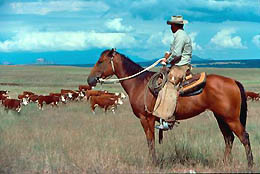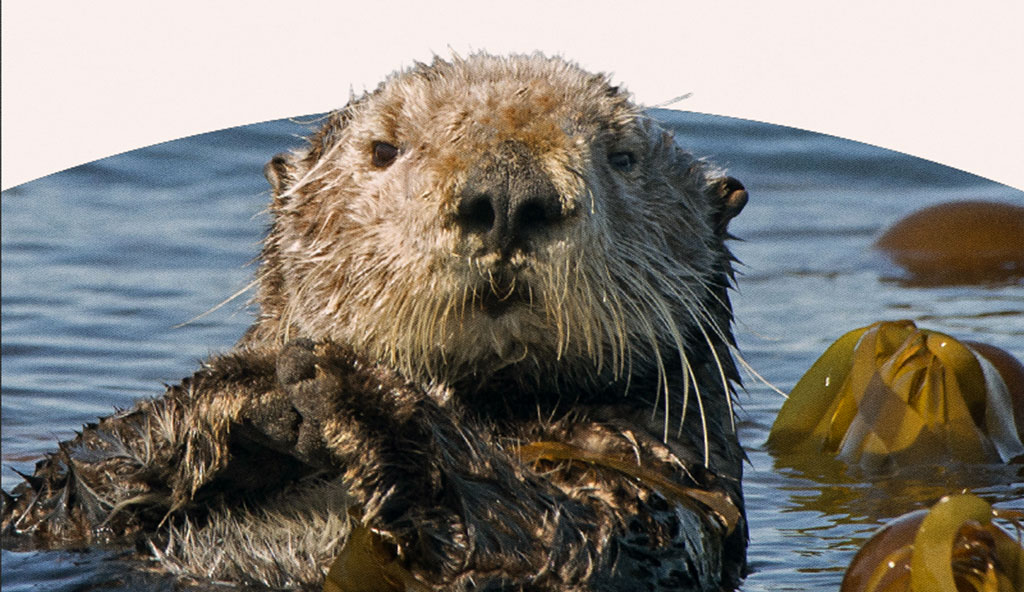By Paul Schwennesen

We had dragged ourselves from all over the country to provide testimony to Attorney General Eric Holder and USDA Secretary Tom Vilsack about “Competition Issues Facing Farmers in Today’s Agricultural Marketplaces.” Despite the extravagant title, the themes of the day were simple: Is the oncoming demise of a traditional way of life the result of malfeasance by multinational beef companies? Is the 30-year trend of lower prices for the calves we produce the result of consolidation and conspiracy in the meatpacking industry? Is the U.S. government complicit in this evolution or is it the kindly big brother, helping us take on the schoolyard bullies?
I’m afraid that after six hours of public testimony I gained no sense of any nefarious manipulations by the corporate big boys. What I gained instead was an inkling that some of us in the industry would rather see higher prices for our cattle (no kidding?), that ranchers ought to get a “fair shake” (whatever that means), and that big beef companies should open the books to their private transactions (since Big is evil, privacy rights needn’t apply).
The sad facts are indisputable, but how we solve for them is not. It is true that well over 80 percent of the meatpacking industry is now in the hands of four conglomerates. Family cattle operations are disappearing at the rate of one thousand per month and over 40 percent of them have evaporated since 1980. The percentage of the food dollar received by ranchers has dropped over 25 percent since 1970. In my hometown in 1969, a rancher could buy a new pickup with a trailer-load of 15 steers; it now takes a semi-load (44). (Calculated in coordination and with data from the University of Arizona’s agricultural economics department.) Economics suggests that these little factoids tell us practically everything we need to know about the modern beef industry.
But what of it? Do these daunting numbers indicate illegal activity in the meat sector? If a federal probe were to unearth hard evidence that Cargill, Tyson, National, or JBS was engaged in fraud, I would be the first to clamor for a swift legal response. After all, one of the few legitimate roles of government, as Jefferson put it, is to “prevent men from injuring one another.” Barring such evidence, however, it is my view that the consolidation of the meat industry is really due to a couple of problems unrelated to corporate meat processors. In fact, Big Meat is simply the byproduct of two seemingly “good” government programs: agricultural subsidies and stringent processing regulations.
Subsidies
According to the Cato Institute, upwards of $30 billion taxpayer dollars a year are funneled into cash subsides to farmers and owners of farmland each year. Seventy-two percent of it goes to the ten largest subsidized farms, effectively (but not surprisingly) countering the original New Deal intention of supporting small family farmers.
The extensive federal welfare system for farm businesses is costly to taxpayers and it creates distortions in the economy. Subsidies induce farmers to overproduce, which pushes down prices and creates political demands for further subsidies. Subsidies inflate land prices in rural America. And the flow of subsidies from Washington hinders farmers from innovating, cutting costs, diversifying their land use, and taking the actions needed to prosper in a competitive global economy.
In the meat industry, in case you think we’re exempt, artificially subsidized feeder grain has significantly altered the cow-calf industry. Cheap feed grain encourages concentrated feedlot systems, and these systems naturally tend to conglomerate as the efficiencies scale up beyond imagination (500,000 head of cattle in one feed yard is not unheard of today). It’s difficult to quantify the price effects of subsidized corn on calf prices (economists at the University of Arizona place it at a percentile or a bit more), but it’s safe to assume that the tremendous efficiency and scale of feedlots (the only ones doing any significant buying) lead to lower calf prices at the sale yard. By way of comparison, a locally processed, directly marketed steer can net around $1,500 to the producer who raised it. In the commodity sector, where the rest of the cattle are marketed, the USDA estimates the average per-head return at $15 below production cost! Subsidies contribute in large part to the market manipulations that allow such an incredible discrepancy to exist.
But are there any alternatives to agricultural subsidies? Won’t their removal be a catastrophic blow to an already ailing industry? How can we toy around with food production, arguably the most precious sector of our economy? Luckily, an experiment has already been run for us, and the results are encouraging. Farm subsidies ended in New Zealand in 1984. The effects on New Zealand agriculture have been overwhelmingly positive. According to the Rodale Institute:
New Zealand agriculture is profitable without subsidies, and that means more people staying in the business. Alone among developed countries of the world, New Zealand has virtually the same percentage of its population employed in agriculture today as it did 30 years ago, and the same number of people living in rural areas as it did in 1920.
New Zealand’s farmers and ranchers are significantly better off today than in the heyday of government “assistance.” We should take note.
Regulation
Overregulation of food processing has done more to hurt ranching families than they even know. The reason for this is that heavy regulation makes it extremely difficult to enter the slaughter and processing sector since the risks are high and the regulatory hurdles immense. It’s easier to build a centralized feedlot/packing house if you are a Cargill with huge capital reserves and an army of technicians than it is to build a USDA certified mom-and-pop packing facility. The reason is simple: reams of paperwork, tests, constantly updated procedures, and risk create an almost insurmountable barrier to entry. The decline in numbers of packinghouses is even more precipitous than the decline in family farms. According to USDA numbers, the number of cattle slaughter plants declined by over a third from 270 in 1996 to 170 in 2006.
The inability to process animals locally has guaranteed that cow-calf producers are locked in to the local auction yards and the attendant cattle-buyers. Alternative marketing opportunities such as direct-marketing finished product are hugely more difficult if the processing facilities don’t exist.
As both a cow-calf producer and owner of a tiny packinghouse myself, I can attest to the forbidding array of regulatory restrictions that hamper creativity and production. For instance, we thought that grassfed hotdogs would be a popular item to sell. It turns out that USDA facilities capable of making them will not accept our state-inspected meat (even though they would be happy to accept non-USDA inspected meat from abroad). Or take jerky: while all-natural grassfed jerky would probably be an excellent and desirable product, inspectors have dismissed the notion out of hand (“Have you seen the regs on Listeria alone? It’s three inches thick!” said one). Managing a packinghouse according to stringent regulation is a crushing burden for anyone, particularly if you are not terribly well connected or financially backed. Government’s genuine concern over safe food has created a megalithic bureaucracy that aims to eliminate all food-borne risk, even if it comes at the cost of local, small-scale food production.
We all want to see the next generation be able stay on the land and make a respectable living. Some suggest that we ask for government programs, grants, and artificial market manipulation. The rest of us need to ask the government to step away from the officious behavior that has caused the very problems we are trying to address.
Accusations of feedlot and packer “collusion” and “price-fixing” are unwarranted if these businesses are simply doing what everyone else is doing: buying as low as they can and selling as high as possible. That they’ve offered lower and lower calf prices over the years does not indicate illegal behavior; they’re not charities after all. While it’s doubtful that they maintain spotless records, we should be awfully suspicious of demands for government guarantees of “fair” prices to their suppliers. We must keep in mind where the true culprit lies: squarely within the unintended consequences of government meddling in the marketplace.
Our Colorado ballroom session wasn’t very romantic, I’m afraid. While most of us had hats, an awful lot of them were in hands instead of on heads. Inviting authoritarian oversight into your competitor’s business always seems like a good idea at the time, but when the same authorities start pounding on your door the notion loses some of its charm. Asking government to break the back of Big Meat is like asking your hangman to pull the next guy’s lever first.



